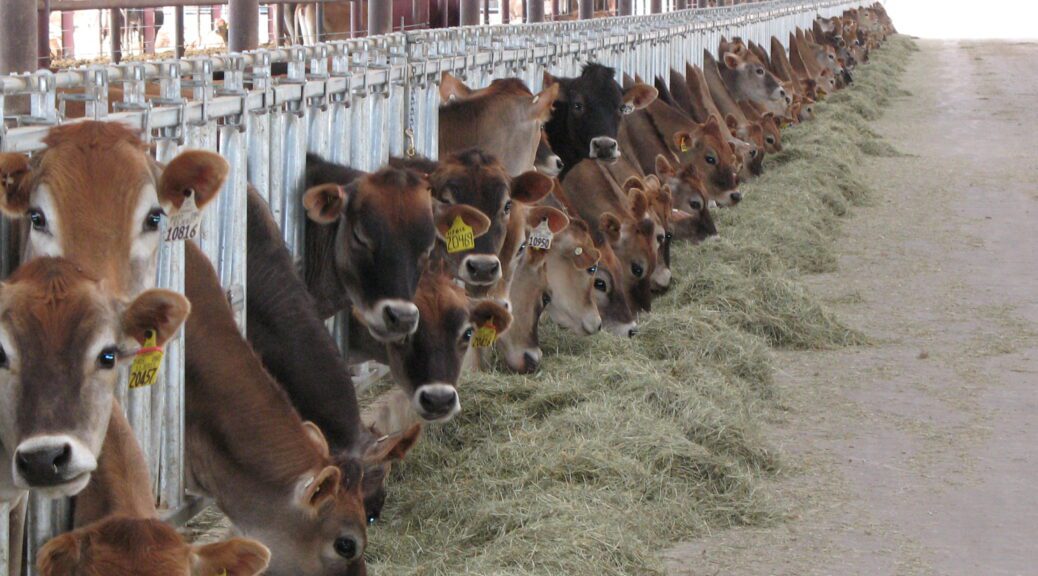
Return to September newsletter
Feeding cows becoming a challenge
By Darren Turley
Executive Director, Texas Association of Dairymen
One of the biggest struggles right now on Texas dairy farms is growing or sourcing enough feed for the herd. About 60% of the modern dairy cow’s diet is based on byproducts of other commodity crops. This year, cottonseed, corn and wheat byproducts are almost nonexistent.
The much-needed rain has arrived in Texas, but it may be too late. Pastures are now green, but it’s too late for most crops to produce enough forage needed to feed cows until next year. Corn crops are very poor this year, so they are being baled to be fed to cows. Hay is being transported from several states to Texas dairy farms, and imports will continue well into next year until new forage can be grown.
The drought is not only affecting Texas dairy farmers. Corn inventories are dangerously low with only 37 days of supply on hand. Soybeans are even worse with only 19 days of inventory available. When it comes to grain, most of the world’s supply is produced in just a few countries. Five countries produce 59% of global grain production: the U.S., Brazil, China, Russia and Ukraine. And production is compromised in two of those countries, with Russia and Ukraine at war. This will impact most of Europe this year, and next year should see both reduced production as well as supply chain disruptions.
When you look further into the future, you see expected growth in the world’s population. Asia and Africa are expected to grow 41% and 49%, respectively. Where grain is grown today is not where it will be most needed in the future. The current global food system is not expected to meet the caloric needs of the world by 2100. It is speculated that we will only meet 63% of the global food needs if new advancements are not implemented.
Another fiscal challenge for farmers is that fertilizer prices have risen 236% in two years, according to a Land O’Lakes report. As an alternative to fertilizer, dairies are exploring monetizing their manure into a methane gas revenue stream. What is the value of your manure? If you use it to replace now-expensive fertilizer, it is definitely very valuable to anyone growing crops. This will continue to be evaluated as contracts are discussed for possible methane digestor projects.
The Texas dairy farmers are doing a great job feeding the world, with exports continuing to climb year over year, even in this drought. Our dairy families are resilient. But as you enjoy your ice cream or glass of milk, pray for your dairy farmers and the struggles they are having each day to take care of their cows.